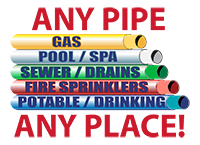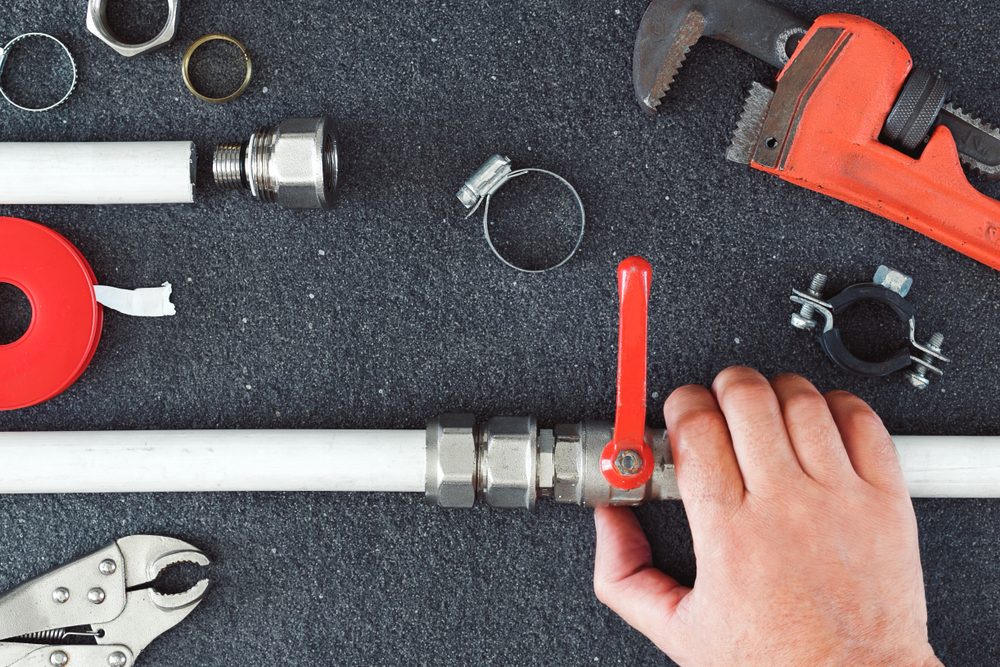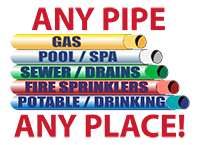Plumbing issues can be a major headache for homeowners and businesses alike. From leaks and blockages to deteriorating pipes, the problems can range from minor inconveniences to significant damages.
Traditional methods of repairing plumbing systems often involve extensive digging and disruption, leading to increased costs and inconveniences for the property owners.
However, there is a modern solution that has revolutionized the plumbing industry – pipelining. In this blog post, we will outline how pipelining can solve plumbing issues effectively, efficiently, and with minimal disruption.
Common Plumbing Problems
Before discussing how pipelining can solve plumbing issues, let’s delve a bit deeper into the common problems that occur in plumbing systems.
Some of the most prevalent issues include pipe leaks, root intrusion, corrosion, scale buildup, and blockages caused by debris or sediment.
Additionally, be it residential or commercial, the property can face the following challenges:
- Toilet clogging
- Leaky faucets, showers, or toilets
- Pipe bursts
- Hot water issues
- Drain and sewer blockages
- Low water pressure
- Pump failures
These problems can lead to water damage, reduced water flow, foul odors, and compromised structural integrity.
Addressing these issues promptly is essential to prevent further damage and maintain the overall functionality of the plumbing system. With pipelining, by San Diego Plumbing, you can say goodbye to all your vexing plumbing troubles.
Types of Pipes and Plumbing Materials
Here’s a look at some of the common types of pipes and plumbing materials used in a building. It’s important to be aware of these before you decide on the pipelining solution.
Some common types of pipes include:
- Drinking water pipes: Over time, these experience rusting and corrosion, and start leaching contaminants into water. Watch out for discoloration or stains in the toilet or kitchen sink, plus the off-taste of water.
- Gas pipes: Again, these may get corroded or rusted over the years, leading to gas leaks or loss of gas flow. Watch out for the gas smell that indicates an issue in your gas pipe.
- Pressurized water pipes: When they are damaged, you’ll notice the loss of water. Again, the water may leave a foul taste.
- Sprinklers: Pipes for fire alarm systems get corroded when water going into these systems is not treated. This leads to leaky pipes and faulty sprinklers.
These issues, however, may be dependent on the material used for the pipes. Typically, these pipes are made from any of the following materials:
- Cast iron and galvanized steel: Used mostly in the early 20th century homes, but is not so common nowadays. Although super sturdy, it often corrodes or rusts, leading to water flow issues and pipe collapse.
- Copper: Durable and long-lasting, mainly used for showers, sinks, or bathtubs. However, it is costly and cannot be used in narrow spaces.
- Polyvinyl chloride or PVC: Durable and can handle high pressure of water due to its smooth inner wall. Even though it is considered to be safe and meets the standards set by American National Standards Institute, it may leach PVC chemicals into the water causing respiratory issues.
- Chlorinated polyvinyl chloride or CPVC: This is nothing but addition of chlorine to PVC piping, which improves its resistance to fire and corrosion.
- Cross-linked polyethylene or PEX: Affordable solution typically used for water supply. They can be easily installed and therefore popular.
- Acrylonitrile butadiene styrene or ABS: Black in color and similar to PVC pipes. However, it can get warped in sunlight and is not easy to install.
- Clay: Flexible and inert, it doesn’t degrade. Because of its porous surface, roots can get stuck on the pipe, eventually leading to cracks.
- Orangeburg: This is made from wood fibers mixed with adhesive and liquid coal tar. Less costly than iron pipes, it is lightweight and used for septic tanks.
What is Pipelining?
Pipelining, also known as cured-in-place pipe (CIPP) lining, is a trenchless technology that allows for the repair and rehabilitation of existing pipes without the need for extensive excavation.
It involves the insertion of a flexible lining material into the damaged pipe, which is then cured to form a new, durable pipe within the old one. This innovative technique has gained popularity due to its numerous benefits over traditional methods.
For CIPP, three major types of resins are used, namely, epoxy, vinyl, and polyester. Of these, epoxy lining is one of the most effective methods of repairing the damaged pipes.
San Diego Plumbing utilizes a top-of-the-line epoxy pipelining technique to optimally restore your pipes.
5 Types of Drain or Sewer Pipelining for Cracked Pipes
Now that you’re aware of the piping issues and the types of pipes, it’s time to discuss major types of pipelining used in the industry today.
Inversion Method
The inversion method is one of the most widely used techniques in pipelining. It involves inserting a flexible lining material into the damaged pipe by reversing its position. The lining material, usually made of resin-coated fabric or fiberglass, is impregnated with resin and folded or rolled onto a specialized inversion drum. Compressed air or water pressure is used to invert the liner and push it through the damaged pipe, coating the interior walls. Once in place, the liner is inflated and cured, forming a new pipe within the old one.
The inversion method is suitable for both small and large diameter pipes and can be used for straight sections as well as bends and curves. It provides a seamless, jointless lining with excellent structural integrity and durability.
Pull-in Method
The pull-in method, also known as the “tow-in” method, involves pulling the lining material into the damaged pipe using a cable or winch system. The lining material, typically a resin-coated felt or fiberglass tube, is saturated with resin and positioned at one end of the damaged pipe. The cable or winch is attached to the liner, and as it is pulled, the liner is inverted and drawn through the pipe. Once the liner is in place, it is inflated and cured, creating a new pipe within the existing one.
The pull-in method is suitable for pipes with limited access points or those with bends and curves. It provides an efficient and effective solution for rehabilitating damaged pipes in challenging environments.
Spray-on Lining Method
The spray-on lining method, also known as “spin casting,” involves spraying a liquid lining material onto the interior surface of the damaged pipe. The lining material, usually a two-component epoxy or polyurethane, is applied using specialized equipment that evenly coats the pipe walls. The material quickly cures, forming a smooth, protective lining.
The spray lining method is particularly useful for pipes with irregular shapes or complex geometries, as it allows for thorough coverage and adherence to the pipe surface. It provides excellent chemical resistance and structural integrity, making it suitable for a wide range of plumbing applications.
Pipe Bursting
Pipe bursting is a trenchless method used for the replacement or repair of underground pipes, particularly those that are severely damaged, deteriorated, or undersized. It involves the installation of a new pipe while simultaneously fracturing and displacing the existing pipe.
Installers position a “bursting head” at one of the access points on the pipe. Hydraulic power is then utilized to pull the bursting head through the pipe. As it progresses along the pipeline, the bursting head fractures the old pipe and simultaneously draws a new seamless pipe behind it. This new pipe is typically made of a durable plastic material that provides resistance against root intrusion for up to a century.
Sliplining
Sliplining is another trenchless method used for rehabilitating existing pipes by inserting a smaller-diameter pipe, known as a liner or carrier pipe, into the host pipe. This technique is commonly employed to address structural issues, leaks, or corrosion in underground pipelines. HDPE or high-density polyethylene is typically used for sliplining pipes.
Advantages of Pipelining
So, why should you consider pipelining? Pipelining offers several advantages. Since it’s primarily non-invasive, it is an attractive solution for plumbing issues.
Here are some key benefits:
- Minimized Disruption: Unlike traditional methods that involve extensive digging and excavation, pipelining requires minimal disruption to the property. Only small access points are needed for inserting the lining material, reducing the need for excavation and preserving the surrounding landscape.
- Cost-Effective: Pipelining can often be more cost-effective than traditional pipe repair methods. The reduced labor and excavation costs, along with shorter project timelines, can lead to significant savings for property owners.
- Durability and Longevity: The cured-in-place pipe lining material is highly durable and resistant to corrosion, cracks, and leaks. The new pipe within the old one can last for several decades, providing a long-term solution for plumbing issues.
- Improved Flow and Efficiency: Pipelining creates a smooth, seamless surface within the existing pipe, enhancing water flow and improving overall system efficiency. Reduced friction within the pipe leads to fewer blockages and increased water pressure.
- Environmentally Friendly: By minimizing excavation and reducing the need for pipe replacement, pipelining contributes to environmental sustainability. It reduces waste and conserves resources while maintaining the integrity of the existing plumbing infrastructure.
However, a caveat. For pipelining to work, it needs to be done correctly. If not, issues such as shrinkage or decreased flow can occur. Also, epoxy lining is hard to remove once done.
Key Steps in the Pipelining Process
The pipelining process involves several steps, starting with a thorough inspection of the plumbing system. While the exact steps may vary depending on the specific method used, here is a general overview of the pipelining process in plumbing:
- Inspection and Assessment: The first step is to conduct a thorough inspection of the plumbing system using specialized cameras or robotic devices. The inspection helps identify the extent of damage, the type of issues present, and the suitability of pipelining as a solution.
- Preparation and Cleaning: Before the pipelining process can begin, the damaged pipe needs to be cleaned and cleared of any obstructions, debris, or buildup. High-pressure water jetting or mechanical cleaning methods may be employed to ensure a clean surface for the lining material.
- Liner Fabrication: The liner material is selected based on the specific requirements of the project, such as pipe diameter, material compatibility, and expected lifespan. The liner material, which is often a flexible fabric or resin-impregnated tube, is prepared and cut to the appropriate length.
- Lining Installation: The liner material is inserted into the damaged pipe using an appropriate method, such as inversion, pull-in, or spray lining.
In the inversion method, the liner is turned inside out and pushed or pulled into place using air or water pressure.
In the pull-in method, the liner is pulled into the pipe using winches or a cable system.
In the spray lining method, a liquid lining material is sprayed onto the interior surface of the pipe, forming a coating.
Inflation and Curing: Once the liner is in place, it is inflated using air pressure or other means to press it against the interior walls of the damaged pipe. The curing process is initiated to harden the liner material and create a new pipe within the existing one.
Curing can be achieved through various methods, such as heat, steam, UV light, or chemical reactions, depending on the specific liner material used.
Quality Control and Testing: After the curing process, the rehabilitated pipe is inspected to ensure the integrity of the lining and its proper alignment. Specialized cameras or inspection equipment are used to verify the quality of the pipelining installation.
Additional testing, such as pressure testing, can be done to ensure the functionality and reliability of the rehabilitated pipe.
Restoration and Cleanup: Any access points or pits created during the pipelining process are restored and backfilled, leaving minimal disruption to the surrounding area.
The plumbing system is put back into operation, and any necessary final cleanup or adjustments are made to complete the pipelining process.
Pipelining Requirements
Even though pipelining is a great solution, it may not work for all pipe sizes or diameters.
Pipelining is beneficial for:
- Pipes greater than or equal to 2” in diameter
- Pipes that are sturdy
- Pipes that have not collapsed
No worries if your pipes don’t meet the above criteria. San Diego Plumbing offers solutions for almost any pipe or water lines. Check out the specs here.
Your One-Stop Solution
Wondering how to get started with pipelining and not sure who to pick? Look no further. With a comprehensive array of pipelining, abrasive cleaning, and repiping services, San Diego Plumbing and Pipelining is your go-to solution for all your plumbing challenges. Cherry on the cake? The services are totally reasonable! Request a free estimate now!







